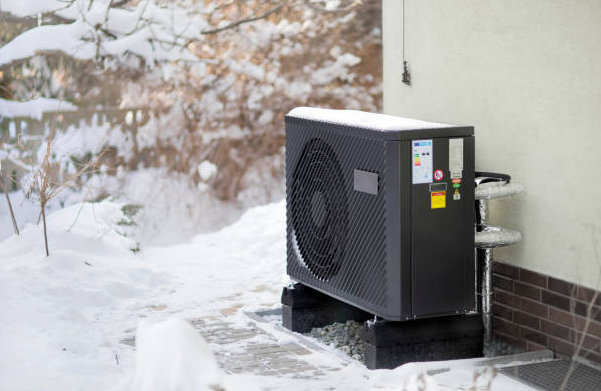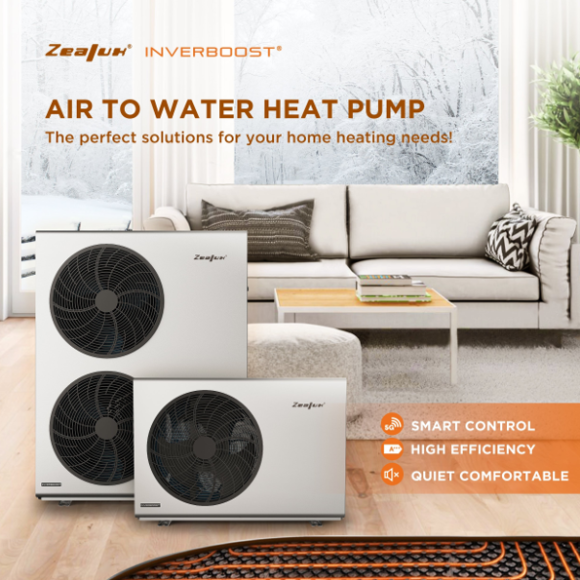Are you weary of throwing your hard-earned money away on your heating and cooling needs? Are you prepared to take on those pesky energy bills? It’s time to smack those costs in the face by thinking about setting up an air source heat pump (ASHP) in your house. This clever approach can keep your wallet fat and happy while simultaneously making you a friend of the earth.
But how much can you save each year if you use an ASHP for your air source heating needs? Let’s get started and find out!
Heat Pump Factors to consider
Before we dive into cost savings, it’s important to understand the factors that can influence how much you can save per year. These include:
- The size of your home
- The climate in your region
- The energy efficiency of your home
- The type of ASHP you choose
- The cost of electricity in your area
All of these factors can have a significant impact on your energy bills and, ultimately, how much you can save per year with an ASHP.
Heat Pump Calculating the savings
ASHPs may offer different applications in different seasons. So, savings may be estimated independently for each season.
The quantity of energy required to heat a home varies based on factors such as outside temperature, insulation levels, and home size. A residence in a cold area may demand 60-100 kWh of energy per square meter per year for heating.
The coefficient of performance (COP) of an ASHP is used to calculate the amount of heat energy generated per unit of electricity required. The COP typically varies from 2.5 to 4.5, indicating that the heat pump can create 2.5 to 4.5 units of heat energy for every unit of electricity utilized. With a COP of 3.5, the heat pump can generate 3.5 kWh of heat energy for every kWh of electricity consumed.
For instance, if a residence consumes 10,000 kWh of heating energy per year, an ASHP with a COP of 3.5 would require 2,857 kWh of electricity to provide the same amount of heat energy. Assuming a $0.15 per kWh rate, the annual power bill for the heat pump would be $428.55 (2,857 kWh x $0.15 per kWh).
A classic heating system, such as a gas furnace, uses natural gas to generate heat. Natural gas prices vary, but at $1 per therm, a residence consuming 10,000 kWh of heating energy per year would require around 907 therms of natural gas each year. The annual cost of natural gas would be $907 (907 therms x $1 per therm).
As a result, an ASHP would be far less expensive to run than a standard heating system. Actual cost reductions, however, are determined by the cost of electricity and natural gas in a specific location, as well as the efficiency of the ASHP and the size of the residence. An ASHP may save households up to 30-50% on their heating expenditures on average.
An ASHP may also offer cooling throughout the summer. Because the same COP calculation can be used for both heating and cooling, the cost reductions for cooling with an ASHP are comparable. If a residence consumes 6,000 kWh of cooling energy per year and has a COP of 3.5, the ASHP would take 1,714 kWh of electricity to produce that amount of cooling energy. Assuming a $0.15 per kWh cost, the annual cost of electricity for cooling would be $257.10 (1,714 kWh x $0.15 per kWh).
To determine potential winter savings, compare the cost of running your present heating system to the cost of running an ASHP. If you now heat your house with oil or propane, you may compare the cost of fuel per gallon against the cost of running an ASHP.
The average cost of heating a home using oil is roughly $2,558 per year, whereas the average cost of heating a home with an ASHP is approximately $943 per year, according to the US Department of Energy. This indicates that upgrading to an ASHP might save you roughly $1,615 in heating bills each year.
ASHPs can also help you save money on your cooling expenses throughout the summer. According to the Department of Energy, the average cost of operating a central air conditioning system is roughly $1,426 per year, whereas the average cost of operating an ASHP for cooling purposes is around $412. You might save roughly $1,014 per year by employing an ASHP for cooling instead of a central air conditioning system.
Of course, the amount you can save will be determined by several factors, including the size of your house, the effectiveness of your ASHP, and the cost of energy in your location. However, it is apparent that an ASHP can provide significant savings for you.
Aside from savings on fees, there are a number of additional bonuses to employing an ASHP. They are, for example, far more ecologically benign than typical heating and cooling systems since they emit no greenhouse gases. They’re also extremely efficient, with some versions boasting efficiency ratings of more than 300%.
Final thoughts
Installing an ASHP in your home will save you money on your energy bills year after year. However, recognizing the factors that may affect your savings and choosing the right heat pump supplier for your home is crucial. If you select a qualified installation, you may enjoy the benefits of an ASHP while saving money in years to come.
Another important aspect of using heat pumps for heating is their energy efficiency.
Compared to traditional heating systems, such as electric resistance or fossil fuel boilers, heat pumps can provide significant energy savings. This is because they do not generate heat, but rather move it from one place to another, using electricity to power the compressor and the other components. The coefficient of performance (COP) is a measure of the efficiency of a heat pump, and it represents the ratio of the heat output to the energy input.
The higher the COP, the more efficient the heat pump.
In addition to the energy savings, heat pumps can also help reduce greenhouse gas emissions. As mentioned earlier, most of the electricity used in the United States is generated from fossil fuels, which produce carbon dioxide and other greenhouse gases. However, even when considering the emissions from electricity generation, heat pumps can still be a cleaner option than traditional heating systems. This is because the COP of a heat pump can be higher than 3, which means that for every unit of electricity used, three or more units of heat are produced. In contrast, the COP of an electric resistance heater is 1, which means that for every unit of electricity used, only one unit of heat is produced.
Finally, it is worth mentioning that heat pumps can also be used for cooling, in addition to heating. In warm climates, a heat pump can absorb heat from the indoor air and release it outside, thus providing air conditioning. This is called a reverse cycle or heat pump air conditioner, and it can be a more energy-efficient and cost-effective option than traditional air conditioning systems.
In conclusion, heat pumps are a promising technology for heating and cooling, with many advantages over traditional heating and cooling systems. Their energy efficiency, potential for reducing greenhouse gas emissions, and versatility make them a compelling option for residential and commercial applications. As the technology continues to improve and become more widespread, it has the potential to play a significant role in the transition to a more sustainable energy future.









